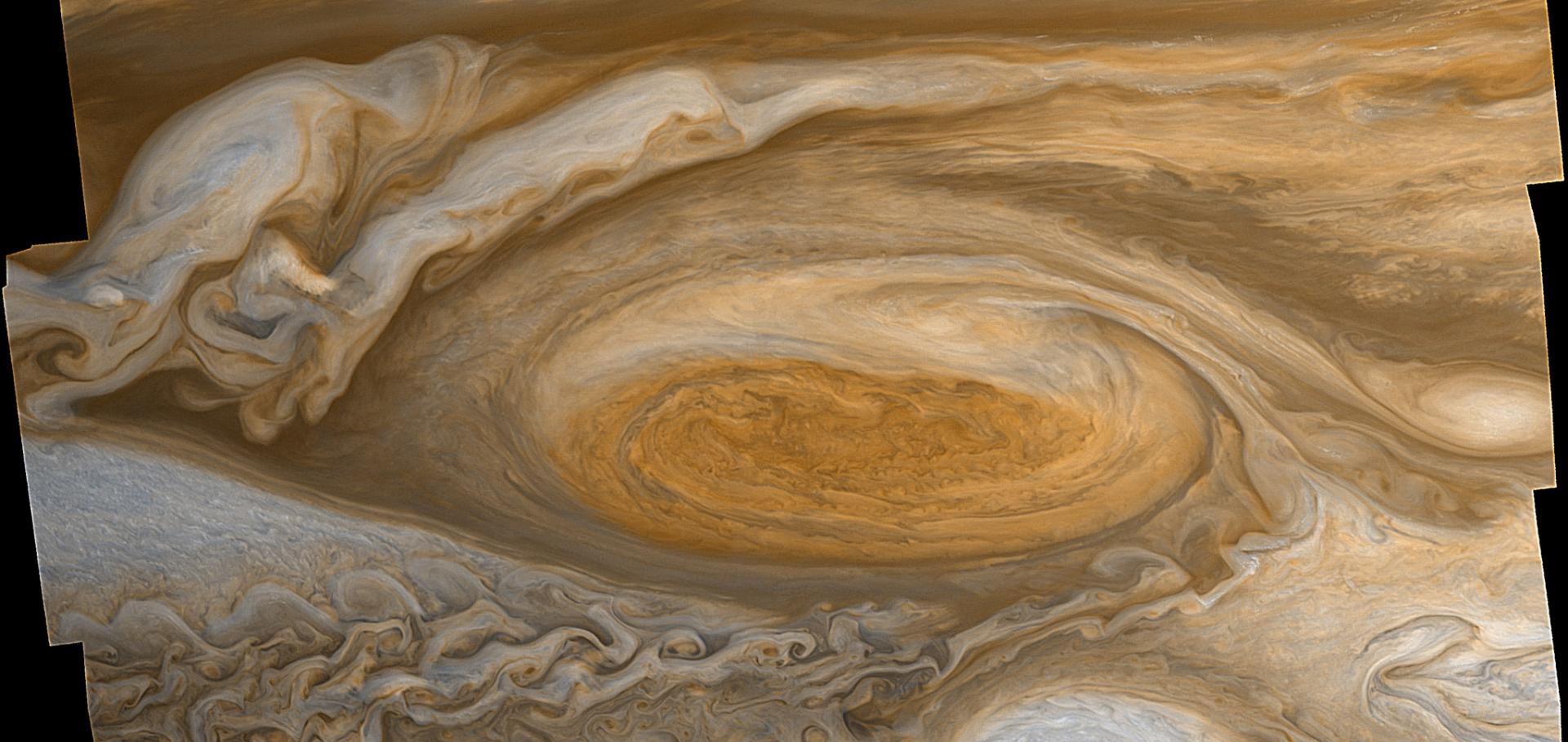Energy Exchanges in Saturn's Polar Regions From Cassini Observations: Eddy-Zonal Flow Interactions
Abstract:
Saturn's polar regions (polewards of ∼63° planetocentric latitude) are strongly dynamically active with zonal jets, polar cyclones and the intriguing north polar hexagon (NPH) wave. Here we analyze measurements of horizontal winds, previously obtained from Cassini images by Antuñano et al. (2015), https://doi.org/10.1002/2014je004709, to determine the spatial and spectral exchanges of kinetic energy (KE) between zonal mean zonal jets and nonaxisymmetric eddies in Saturn's polar regions. Eddies of most resolved scales generally feed KE into the eastward and westward zonal mean jets at rates between 4.3 × 10−5 and 1.4 × 10−4 W kg−1. In particular, the north polar jet (at 76°N) was being energized at a rate of ∼10−4 W kg−1, dominated by the contribution due to the zonal wavenumber m = 6 NPH wave itself. This implies that the hexagon was not being driven at this time through a barotropic instability of the north polar jet, but may suggest a significant role for baroclinic instabilities, convection or other internal energy sources for this feature. The south polar zonal mean jet KE was also being sustained by eddies in that latitude band across a wide range of m. In contrast, results indicate that the north polar vortex may have been weakly barotropically unstable at this time with eddies of low m gaining KE at the expense of the axisymmetric cyclone. However, the southern axisymmetric polar cyclone was gaining KE from non-axisymmetric components at this time, including m = 2 and its harmonics, as the elliptical distortion of the vortex may have been decaying.Assimilation of both column‐ and layer‐integrated dust opacity observations in the Martian atmosphere
Abstract:
A new dust data assimilation scheme has been developed for the UK version of the Laboratoire de Météorologie Dynamique (LMD) Martian General Circulation Model. The Analysis Correction scheme (adapted from the UK Met Office) is applied with active dust lifting and transport to analyze measurements of temperature, and both column-integrated dust optical depth (CIDO), τref (rescaled to a reference level), and layer-integrated dust opacity (LIDO). The results are shown to converge to the assimilated observations, but assimilating either of the dust observation types separately does not produce the best analysis. The most effective dust assimilation is found to require both CIDO (from Mars Odyssey/THEMIS) and LIDO observations, especially for Mars Climate Sounder data that does not access levels close to the surface. The resulting full reanalysis improves the agreement with both in-sample assimilated CIDO and LIDO data and independent observations from outside the assimilated dataset. It is thus able to capture previously elusive details of the dust vertical distribution, including elevated detached dust layers that have not been captured in previous reanalyses. Verification of this reanalysis has been carried out under both clear and dusty atmospheric conditions during Mars Years 28 and 29, using both in-sample and out of sample observations from orbital remote sensing and contemporaneous surface measurements of dust opacity from the Spirit and Opportunity landers. The reanalysis was also compared with a recent version of the Mars Climate Database (MCD v5), demonstrating generally good agreement though with some systematic differences in both time mean fields and day-to-day variability.


